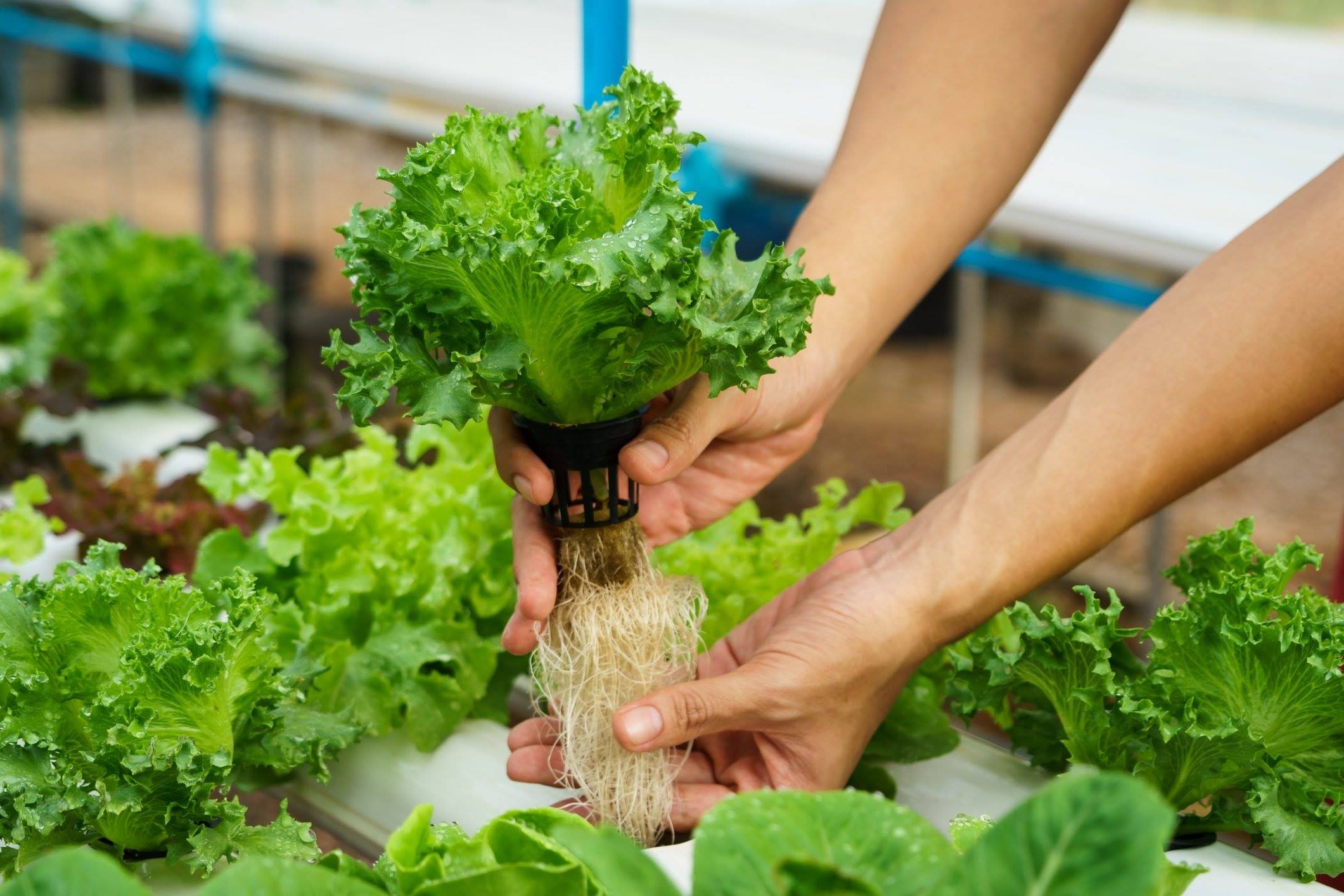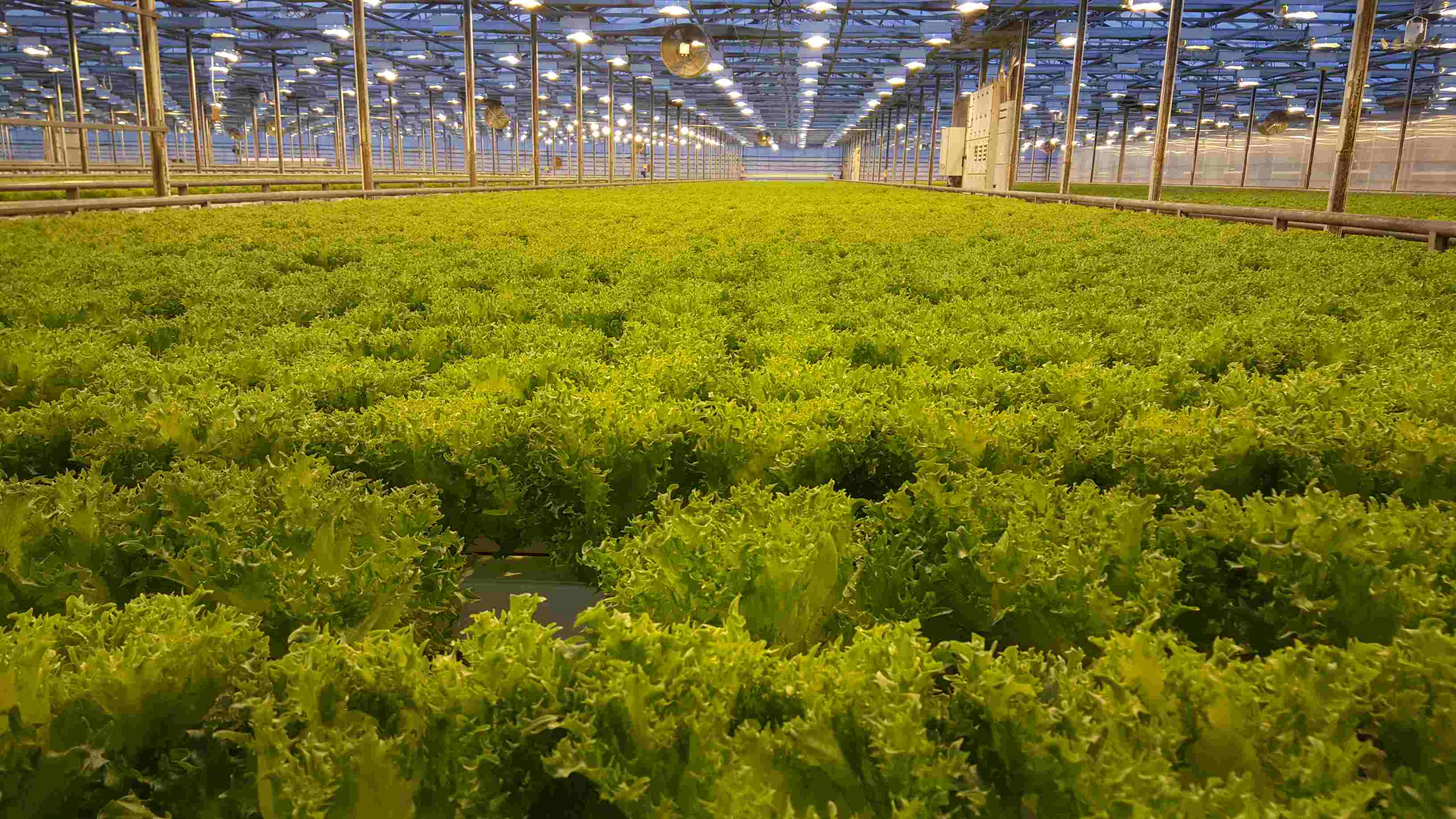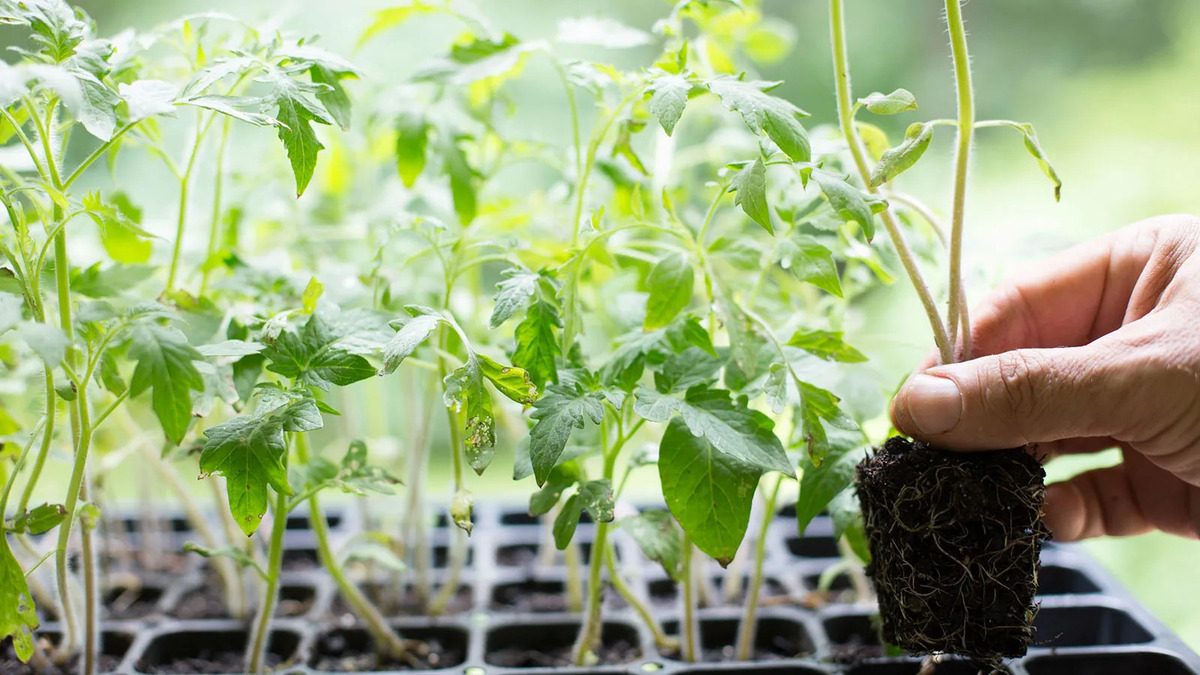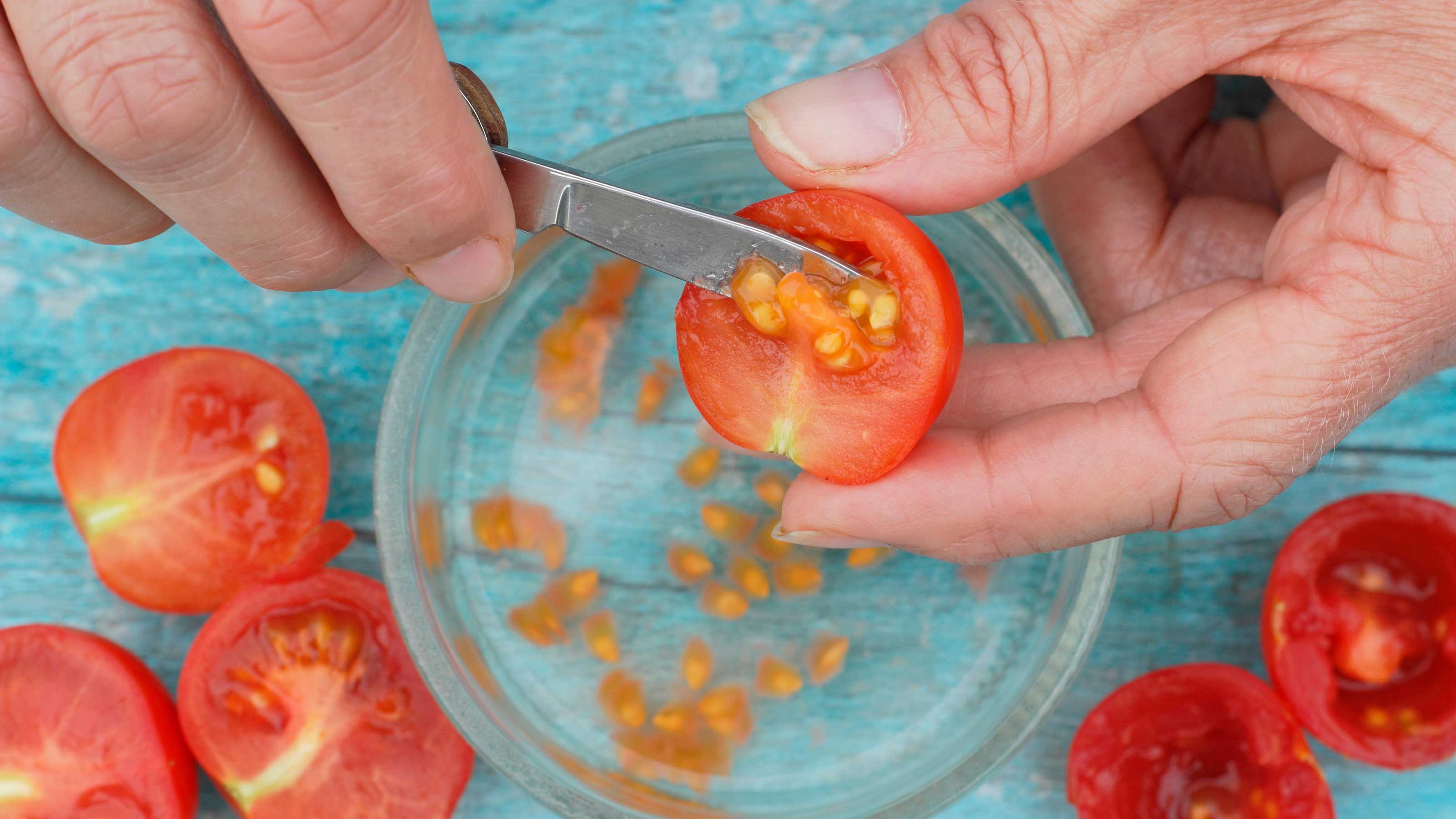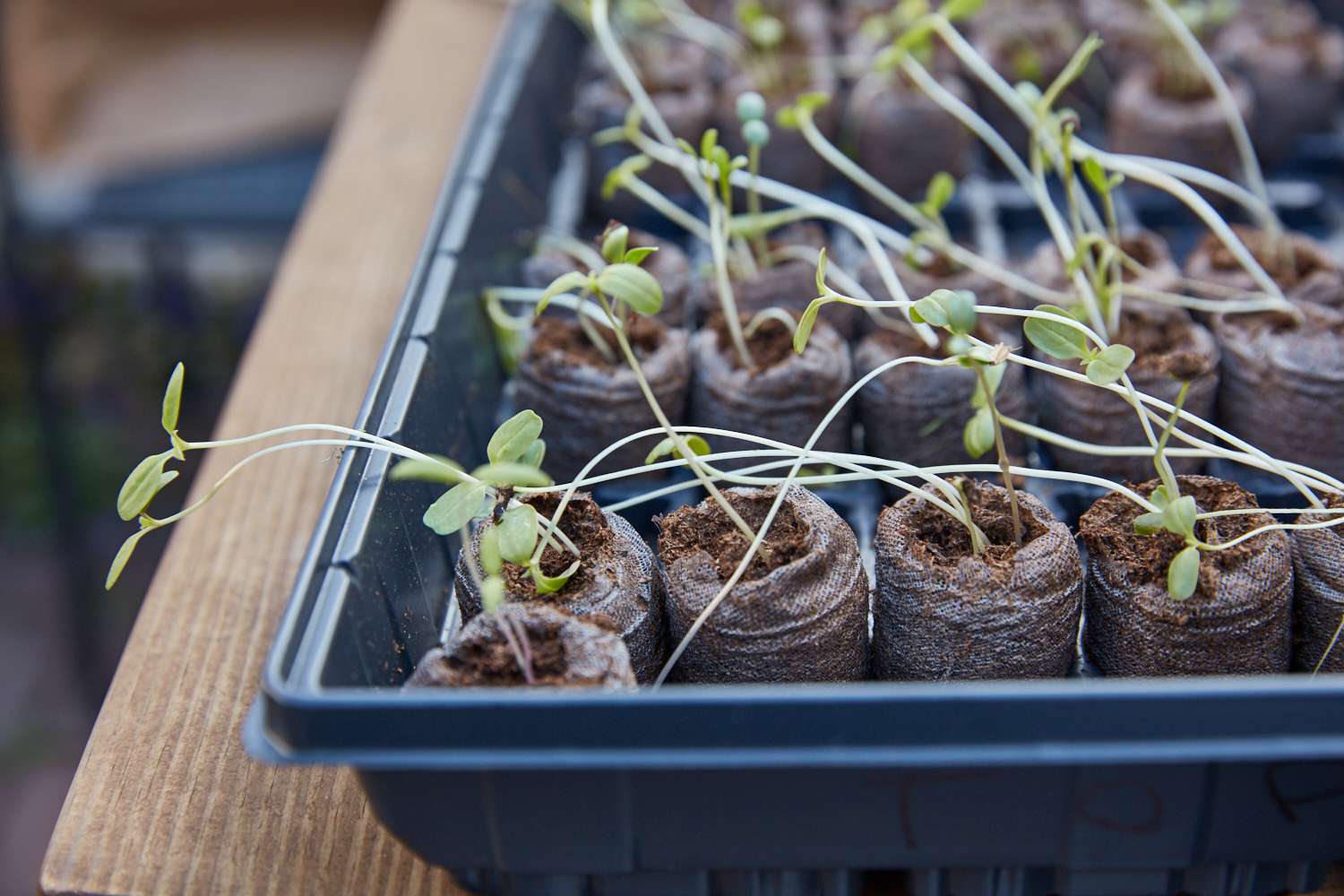Home>Gardening Tips and Tricks>Eco-Friendly Gardening>How To Grow Tomatoes In Hydroponics
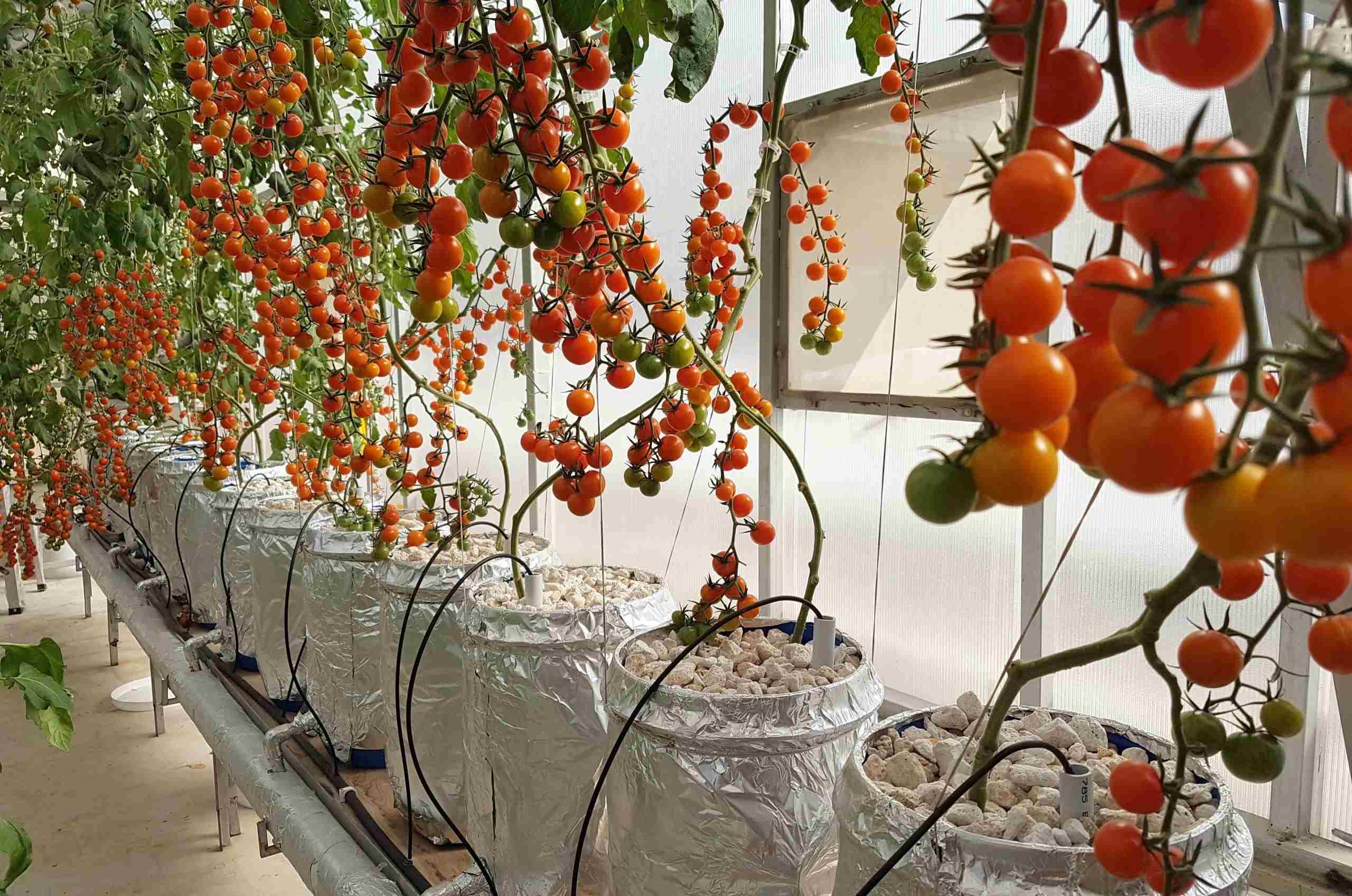

Eco-Friendly Gardening
How To Grow Tomatoes In Hydroponics
Modified: January 22, 2024
Learn how to grow tomatoes in hydroponics with this eco-friendly gardening guide. Maximize your yields and minimize your environmental impact.
(Many of the links in this article redirect to a specific reviewed product. Your purchase of these products through affiliate links helps to generate commission for Chicagolandgardening.com, at no extra cost. Learn more)
Table of Contents
- Introduction
- Benefits of Growing Tomatoes in Hydroponics
- Setting up a Hydroponic System
- Choosing the Right Tomato Varieties for Hydroponics
- Preparing the Hydroponic Medium
- Planting Tomato Seeds or Seedlings
- Nutrient Management in Hydroponic Tomato Cultivation
- Watering and pH Monitoring
- Lighting and Temperature Requirements for Hydroponic Tomatoes
- Pruning and Support for Tomato Plants
- Pest and Disease Control in Hydroponics
- Harvesting and Storage of Hydroponically Grown Tomatoes
- Conclusion
Introduction
Welcome to the world of hydroponic gardening, where the principles of sustainable and eco-friendly practices meet the joys of growing your own fresh produce. In this article, we will delve into the fascinating world of hydroponic tomato cultivation and discover how this innovative method can revolutionize the way you grow tomatoes.
Growing tomatoes in hydroponics entails cultivating plants without soil, using a nutrient-rich water solution as the growing medium. This method offers numerous advantages over traditional soil-based gardening, making it a popular choice for eco-conscious gardeners and urban dwellers with limited space.
Hydroponic systems allow precise control over environmental factors, such as nutrient levels, pH balance, and water usage, resulting in healthier and more productive plants. Additionally, hydroponic gardening reduces the risk of soil-borne diseases and pests, eliminates the need for excessive pesticide use, and conserves water resources.
Whether you’re a seasoned gardener looking for a new challenge or a beginner eager to explore sustainable gardening methods, hydroponic tomatoes are a rewarding and enjoyable endeavor. Not only will you be able to harvest delicious, vine-ripened tomatoes year-round, but you’ll also contribute to a more sustainable and eco-friendly way of food production.
In this article, we will guide you through the essential steps of setting up a hydroponic system, selecting suitable tomato varieties, preparing the growing medium, managing nutrient levels, maintaining optimal lighting and temperature conditions, and dealing with potential pests and diseases. By the end, you’ll be armed with the knowledge and confidence to embark on your own hydroponic tomato-growing adventure.
Benefits of Growing Tomatoes in Hydroponics
Hydroponic tomato cultivation offers a range of benefits that make it an attractive option for both commercial growers and home gardeners. Let’s explore some of the advantages:
- Year-round Harvest: In a hydroponic system, you have full control over the growing environment, allowing you to grow tomatoes all year regardless of the season. This means you can enjoy fresh, homegrown tomatoes even during the winter months.
- Higher Yields: Hydroponics enables plants to maximize their growth potential by providing the ideal balance of nutrients, water, and oxygen. As a result, tomato plants grown hydroponically tend to produce higher yields compared to traditional soil-based cultivation methods.
- Space Efficiency: Hydroponics eliminates the need for soil, making it an excellent choice for small spaces like balconies, rooftops, or indoor gardens. Vertical hydroponic systems, such as tower gardens, allow you to maximize your growing area by stacking multiple layers of plants.
- Water Conservation: Hydroponic systems use significantly less water compared to traditional soil gardening. The water circulating through the system is recirculated and reused, minimizing water waste and reducing the strain on water resources.
- Reduced Pesticide Use: Soil-borne pests and diseases can be a challenge in traditional gardening. In hydroponics, these issues are greatly minimized since the plants are grown in a soil-less medium. This reduces the need for pesticides, making your tomatoes healthier and safer.
- Faster Growth and Harvest: Hydroponic tomatoes typically have a faster growth rate compared to soil-grown counterparts. With the optimal nutrient availability and controlled environmental factors, hydroponic tomatoes can mature quicker, allowing you to enjoy your harvest sooner.
- Sustainable and Eco-friendly: Hydroponics is a more sustainable and eco-friendly way of growing tomatoes. It reduces soil erosion, conserves water, and eliminates the need for synthetic fertilizers. As a result, hydroponic tomatoes have a lower environmental impact compared to conventionally grown tomatoes.
These benefits demonstrate why hydroponics is gaining popularity among gardening enthusiasts and commercial growers alike. By embracing this innovative approach, you can enjoy a bountiful harvest of delicious, fresh tomatoes while reducing your environmental footprint.
Setting up a Hydroponic System
Before you embark on your hydroponic tomato growing journey, it’s essential to set up a suitable hydroponic system. Here are the key steps involved:
- Choose the System Type: There are several types of hydroponic systems, including deep water culture, nutrient film technique, and drip irrigation. Consider factors such as space availability, budget, and personal preference when selecting the system type.
- Set up the Reservoir: The reservoir is where the nutrient solution is stored. It should be light-proof to prevent algae growth. Install a submersible pump in the reservoir to circulate the solution through the system.
- Prepare the Growing Containers: Depending on the system type, you’ll need containers to hold the plants and the growing media. Common options include buckets, trays, or specialized net pots. Clean and disinfect the containers before use to prevent the growth of harmful bacteria or pathogens.
- Choose the Growing Medium: Select a hydroponic growing medium that provides good drainage and supports root growth. Popular options include perlite, vermiculite, coconut coir, or rockwool cubes. Ensure the medium is properly rinsed and pH balanced before use.
- Install the Irrigation System: Depending on the system type, you’ll need to install the necessary irrigation components such as tubing, drip emitters, or spray heads. Ensure the system is properly connected and functioning to deliver the nutrient solution to the plants.
- Mix and Maintain the Nutrient Solution: Prepare a well-balanced nutrient solution using a commercial hydroponic fertilizer or a DIY nutrient mix. Regularly monitor and adjust the nutrient solution’s pH and nutrient levels to ensure optimal plant growth.
- Provide Adequate Lighting: Tomato plants require sufficient light for photosynthesis. Install grow lights or position your hydroponic system in a location where the plants receive at least 8-10 hours of direct or indirect sunlight per day.
- Monitor Environmental Factors: Regularly monitor the temperature and humidity levels in your hydroponic system. Maintain a temperature range of 70-80°F (21-27°C) during the day and slightly cooler temperatures at night. Use fans or ventilation to ensure adequate air circulation.
- Start with Seedlings or Seeds: Choose healthy tomato seedlings or start your plants from seeds. If using seedlings, transplant them into the hydroponic system after they have developed a few true leaves. For seeds, germinate them in a separate growing medium and transfer them to the hydroponic system once they have sprouted.
Setting up a hydroponic system may seem intimidating at first, but with careful planning and attention to detail, you can create an efficient and productive environment for your tomato plants. Remember to research the specific requirements of the chosen hydroponic system and adjust as necessary to optimize plant growth.
Choosing the Right Tomato Varieties for Hydroponics
When it comes to selecting tomato varieties for hydroponic cultivation, there are a few factors to consider. The right choice of tomato varieties can contribute to the success and productivity of your hydroponic garden. Here are some tips to help you make the best selection:
- Determinate vs. Indeterminate: Determine if you want determinate or indeterminate tomato varieties. Determinate tomatoes are compact and bushy, making them suitable for smaller spaces. Indeterminate tomatoes are vining and require trellising or support as they continue to grow throughout the season.
- Growth Habit: Look for tomato varieties that have a compact growth habit, manageable size, and do not require excessive pruning or training. This will help you effectively manage the plants within your hydroponic system.
- Disease Resistance: Consider selecting tomato varieties that are known for their disease resistance. Look for resistance to common tomato diseases such as Fusarium wilt, Verticillium wilt, and Tomato mosaic virus. Disease-resistant varieties can help minimize the risk of crop loss due to infections.
- Fruit Size and Yield: Determine the desired fruit size and yield. Some tomato varieties produce larger fruits, while others are known for their abundance of smaller fruits. Consider your personal preferences and intended use of the tomatoes (e.g., fresh eating, canning, or sauce making) when making your selection.
- Days to Maturity: Pay attention to the “days to maturity” listed for each tomato variety. This refers to the time it takes from planting to harvest. Some tomato varieties have a shorter maturity period, allowing for faster harvests.
- Flavor and Culinary Use: Consider the flavor profile and culinary use of the tomatoes. Some varieties are prized for their sweetness, while others have a more acidic taste. Think about the dishes you plan to create with your hydroponic tomatoes and choose varieties that align with your culinary preferences.
Here are a few popular tomato varieties that are well-suited for hydroponic cultivation:
- Roma Tomatoes (Lycopersicon esculentum): These determinate tomatoes are ideal for sauces, pastes, and canning. They have a meatier texture and lower moisture content.
- Cherry Tomatoes (Solanum lycopersicum var. cerasiforme): Known for their small size and sweetness, cherry tomatoes are versatile and perfect for snacking, salads, and garnishes. Varieties like ‘Sweet 100’ or ‘Sungold’ are popular choices.
- Beefsteak Tomatoes: If you prefer large, juicy tomatoes for sandwiches and slicing, consider beefsteak varieties like ‘Brandywine’ or ‘Mortgage Lifter’.
- Salad Tomatoes: Varieties like ‘Early Girl’ or ‘Celebrity’ produce medium-sized, flavorful tomatoes that are great for salads and sandwiches.
By considering factors such as growth habit, disease resistance, fruit size, days to maturity, flavor, and culinary use, you can choose tomato varieties that will thrive in your hydroponic system and meet your specific needs and preferences.
Preparing the Hydroponic Medium
When growing tomatoes hydroponically, you’ll need a suitable growing medium to support the plants’ roots and provide stability. The hydroponic medium serves as a substitute for soil and allows the roots to access oxygen, nutrients, and water. Here’s how to prepare the hydroponic medium:
- Choose the Right Medium: Select a hydroponic growing medium that is lightweight, well-draining, and has excellent water retention properties. Popular options include perlite, vermiculite, coconut coir, or rockwool cubes. Each medium has its own characteristics, so choose the one that suits your needs and preferences.
- Rinse the Medium: Before using the hydroponic medium, thoroughly rinse it with water to remove any dust, debris, or excess salts. This step is crucial to prevent clogging in the system and ensure optimal plant health.
- Soak the Medium: Depending on the type of medium, you may need to soak it in water for a certain period. Follow the manufacturer’s instructions or soak the medium until it becomes fully saturated. This step ensures that the roots have ample moisture when the plants are transplanted.
- Balance the pH: Test the pH of the hydroponic medium and adjust it if necessary. The pH level should be around 5.5-6.5 for most hydroponic crops, including tomatoes. Use a pH adjustment solution to raise or lower the pH as needed.
- Pre-condition the Medium: In certain cases, it’s recommended to pre-condition the hydroponic medium before planting the tomato seedlings or seeds. This involves soaking the medium in a nutrient solution for a specific time to allow it to absorb the necessary nutrients.
Remember that the hydroponic medium is inert and does not contain any inherent nutrients like soil. All the essential nutrients for plant growth will be provided through the nutrient solution. The primary purpose of the hydroponic medium is to anchor the roots and provide a stable environment for optimal growth.
By properly preparing the hydroponic medium, you can ensure that your tomato plants have a well-drained and well-aerated root zone, which promotes healthy root development and efficient nutrient uptake. This, in turn, contributes to the overall success of your hydroponic tomato cultivation.
Planting Tomato Seeds or Seedlings
Once you have prepared the hydroponic system and the growing medium, it’s time to plant your tomato seeds or seedlings. Here’s how to go about it:
- Choose High-Quality Seeds or Seedlings: Select high-quality tomato seeds or purchase healthy seedlings from a reliable source. Look for varieties that are suitable for hydroponic systems and have been bred for disease resistance and optimal growth.
- Starting from Seeds: If you’re starting from seeds, sow them in a separate growing medium and place them in a warm, well-lit area to germinate. Follow the instructions on the seed packet for the optimal planting depth and spacing between seeds.
- Transplanting Seedlings: If using seedlings, gently remove them from their containers, taking care not to damage the roots. If the roots are tightly bound, loosen them slightly to encourage outward growth. Place the seedlings into the hydroponic system, ensuring that the root system is adequately covered with the growing medium.
- Spacing and Planting Density: Depending on the tomato variety and the size of your hydroponic system, determine the appropriate spacing between plants. It’s essential to provide enough space for each plant to grow and access light and nutrients without overcrowding.
- Ensuring Proper Support: Tomato plants tend to grow tall and benefit from support. Install stakes, trellises, or a vertical support system before the plants grow too large. This will prevent them from sprawling on the ground, improve air circulation, and make it easier to manage the plants within the hydroponic system.
- Optimal Planting Depth: When planting tomato seedlings, bury them up to the first set of true leaves. This encourages the development of additional roots along the buried stem, which enhances the plant’s stability and nutrient uptake.
- Ensure Proper Lighting: Tomato plants require adequate lighting for photosynthesis. If using artificial grow lights, position them at an appropriate distance above the plants, following the manufacturer’s guidelines. If relying on natural sunlight, ensure the hydroponic system is situated in a location that receives sufficient light, ideally 8-10 hours per day.
- Monitor and Adjust: After planting, closely monitor the plants for any signs of stress or nutrient deficiencies. Regularly check the water level, pH levels, and nutrient strength in the system. Adjust as necessary to maintain optimal growing conditions.
By following these steps, you can ensure a smooth and successful transition for your tomato plants in the hydroponic system. With proper care and attention, the seedlings will establish themselves and start thriving, laying the foundation for a fruitful and rewarding hydroponic tomato cultivation journey.
Nutrient Management in Hydroponic Tomato Cultivation
In hydroponic tomato cultivation, proper nutrient management is crucial for the growth and productivity of the plants. Unlike in soil-based gardening, where nutrients are naturally available, hydroponic systems rely on nutrient solutions to provide essential elements for plant growth. Here’s how to effectively manage nutrients in hydroponic tomato cultivation:
- Choose a Balanced Nutrient Solution: Select a commercial hydroponic fertilizer formulated specifically for tomatoes or create your own nutrient mix. A complete nutrient solution should contain the essential macro and micronutrients, including nitrogen, phosphorus, potassium, calcium, magnesium, iron, and others.
- Mix the Nutrient Solution: Dilute the fertilizer according to the manufacturer’s instructions or the desired strength for your hydroponic system. Use a container with clean, non-reactive materials to mix the nutrient solution, ensuring accurate measurements of both the fertilizer and water.
- Monitor pH Levels: Regularly check the pH level of the nutrient solution using a pH meter or test kit. Tomatoes generally prefer a slightly acidic pH level between 5.5 and 6.5. Adjust the pH as necessary using pH up or pH down solutions to ensure optimal nutrient absorption by the plants.
- Check Nutrient Strength: Measure the electrical conductivity (EC) or total dissolved solids (TDS) of the nutrient solution periodically using a conductivity meter. This indicates the strength of the solution. Tomato plants typically require an EC between 1.8 and 2.5 or a TDS between 1200 and 1800 ppm during the vegetative and flowering stages. Adjust the nutrient concentration accordingly.
- Follow a Feeding Schedule: Establish a feeding schedule based on the growth stage of the tomato plants. Younger plants require lower nutrient concentrations, gradually increasing as they mature. During the fruiting stage, adjust the nutrient solution to promote fruit development and flavor.
- Implement Nutrient Solutions Changes: Regularly monitor the nutrient solution levels in the system and change the solution at appropriate intervals. This ensures that the plants receive a fresh and well-balanced nutrient supply and reduces the risk of nutrient imbalances or toxicities.
- Supplement with Calcium and Magnesium: Tomato plants have a high demand for calcium and magnesium. Supplement the nutrient solution with calcium nitrate and magnesium sulfate or use calcium and magnesium supplements specifically formulated for hydroponics. This helps prevent nutrient deficiencies and improves overall plant health.
- Consider Additional Supplements: In addition to the essential nutrients, consider incorporating beneficial supplements such as seaweed extracts, humic acids, or beneficial microorganisms. These can enhance root development, nutrient uptake, and overall plant vigor.
Remember, nutrient management in hydroponic tomato cultivation requires regular monitoring, adjustment, and attention to detail. Understanding the nutritional needs of the plants and maintaining a well-balanced and properly adjusted nutrient solution will contribute to healthy plant growth, robust fruiting, and ultimately, a successful hydroponic tomato harvest.
Watering and pH Monitoring
Proper watering and pH monitoring are critical aspects of hydroponic tomato cultivation to ensure optimal plant health and growth. Watering techniques and maintaining the correct pH level of the nutrient solution play key roles in providing the necessary hydration and nutrient uptake for your plants. Here’s what you need to know:
- Watering Frequency and Duration: Tomato plants in hydroponic systems require regular and consistent watering. The frequency and duration of watering will depend on various factors such as the stage of growth, environmental conditions, and the size of the plants. Strive for a balance between keeping the root zone consistently moist without causing waterlogging or excessive drying.
- Hydroponic Watering Techniques: There are several commonly used hydroponic watering techniques, including flood and drain, drip irrigation, or nutrient film technique. Each method has its advantages, but the goal is to ensure that the roots have access to water and nutrients as efficiently as possible.
- Precise pH Monitoring: Regularly monitor the pH of the nutrient solution to ensure it remains within the appropriate range for tomato plants, typically between 5.5 and 6.5. Fluctuations in pH can affect nutrient availability and uptake. Use a pH meter or test kit to measure the pH level, and adjust it if necessary using pH up or pH down solutions.
- Reasons for pH Imbalances: pH imbalances can occur due to various reasons, such as nutrient additions, evaporation, plant uptake, or the breakdown of nutrient solutions over time. It’s important to check and adjust the pH regularly to prevent nutrient deficiencies or toxicities.
- Effect of pH on Nutrient Availability: pH plays a crucial role in nutrient availability to the plants. Different nutrients are absorbed and become available to the roots at different pH levels. For example, at a higher pH, iron can become less available to the plants, leading to chlorosis or yellowing of leaves. Maintaining the proper pH range allows for optimal nutrient absorption.
- Adjusting pH Levels: If the pH of the nutrient solution is too high, use a pH down solution to lower it. If the pH is too low, use a pH up solution to raise it. Make adjustments gradually, allowing time for the solution to stabilize before retesting and further adjustments.
- Monitor and Maintain Solution Sterility: Regularly check the overall cleanliness and sterility of your hydroponic system. Bacteria or algae growth can impact nutrient availability and clog irrigation lines. A clean system reduces the risk of disease and ensures optimal nutrient uptake by the plants.
- Record-Keeping: Maintain a record of watering and pH monitoring activities to track any patterns or changes. This record will help you identify any issues or inconsistencies and make necessary adjustments to maintain optimal growing conditions.
By implementing proper watering techniques and closely monitoring the pH of the nutrient solution, you can create a healthy and balanced environment for your tomato plants. Consistency and attention to detail in managing water and pH levels will contribute to robust growth, nutrient uptake, and ultimately, a successful hydroponic tomato crop.
Lighting and Temperature Requirements for Hydroponic Tomatoes
Providing adequate lighting and maintaining optimal temperatures are crucial factors in successful hydroponic tomato cultivation. Tomatoes are sun-loving plants, and reproducing the right lighting conditions is essential for their growth and fruit production. Additionally, maintaining the correct temperature range creates an environment where plants can thrive. Here are the key considerations:
- Lighting Intensity: Tomatoes require intense light for healthy growth. If growing indoors, use high-quality grow lights that provide the appropriate spectrum and intensity. Aim for at least 12-16 hours of light per day. Position the lights about 6-12 inches above the plants and adjust the distance as the plants grow.
- Natural Sunlight: If growing tomatoes in a greenhouse or near a window, ensure they receive a minimum of 8-10 hours of direct or indirect sunlight daily. Monitor the intensity of sunlight to prevent scorching or heat stress on the plants.
- Light Spectrum: Tomato plants require a balanced spectrum of light that includes both blue and red wavelengths. Blue light promotes vegetative growth and compactness, while red light stimulates flowering and fruiting. Consider using full-spectrum LED grow lights that mimic natural sunlight for optimal results.
- Temperature Range: Tomatoes thrive in temperatures between 70-80°F (21-27°C) during the day and slightly cooler temperatures at night. Temperature extremes can negatively impact growth and fruit set. Use fans, ventilation, or temperature control devices to maintain a consistent and suitable temperature range.
- Adequate Ventilation: Proper air circulation is vital to prevent diseases and ensure a constant supply of fresh carbon dioxide. Use fans or ventilation systems to maintain a gentle breeze around the plants and minimize stagnant air.
- Temperature Fluctuations: Be cautious of temperature fluctuations, especially during heatwaves or cold snaps. Sudden temperature changes can stress the plants and lead to flower drop or fruit damage.
- Humidity Levels: Tomatoes prefer moderate humidity levels between 40-60%. High humidity can increase the risk of fungal diseases, while low humidity can result in flower drop. Use a hygrometer to monitor humidity and employ humidity control measures as needed.
- Protecting from Extreme Temperatures: During hot weather, shield the plants from excessive heat by providing shade cloth or adjusting the positioning of lights. In colder months, use insulation, greenhouse heaters, or grow tents to maintain the desired temperature range.
- Observe Plant Responses: Monitor your tomato plants closely for any signs of stress or heat/cold damage. Adjust lighting, temperature, and humidity settings accordingly to provide the most suitable conditions for healthy growth.
Creating an optimal environment with appropriate lighting and temperature conditions is crucial for successful hydroponic tomato cultivation. By ensuring the right lighting intensity, spectrum, and duration, as well as maintaining a consistent temperature range, you can promote healthy plant growth, flower development, fruit production, and ultimately, a bountiful harvest of delicious tomatoes.
Pruning and Support for Tomato Plants
Pruning and providing proper support for tomato plants are essential practices in hydroponic gardening. These techniques help manage plant growth, promote airflow, and ensure optimal fruit production. Proper pruning and support encourage healthier plants, reduce the risk of disease, and improve the quality of the harvest. Here’s what you need to know:
- Remove Suckers: Suckers are new shoots that appear in the crotch between the main stem and the branches. They compete for nutrients and can lead to overcrowding. Pinch off suckers when they are small to direct plant energy towards fruiting branches.
- Stake or Trellis: As tomato plants grow, they require support to prevent sprawling and ensure proper air circulation. Stake or trellis your plants at an early stage to avoid damaging the roots later. Choose a sturdy support system that can withstand the weight of the plants and fruit.
- Tie or Clip the Main Stem: Gently tie or use clips to secure the main stem to the support as the plant grows. This helps maintain its upright position, prevents breakage, and promotes even growth.
- Prune Excess Foliage: Dense foliage can impede airflow and create a favorable environment for pests and diseases. Remove any yellow or diseased leaves, as well as excessive leaves that block light penetration or airflow. This promotes better light distribution and reduces the risk of fungal infections.
- Prune Lower Leaves: Prune the lower leaves that come into contact with the growing medium or touch the ground. This practice helps prevent the spread of soil-borne diseases and reduces the risk of excessive moisture leading to fungal issues.
- Avoid Overpruning: While pruning is necessary, avoid excessive removal of leaves, especially those above the developing fruit. The leaves are responsible for photosynthesis and contribute to the plant’s energy production. Strive for a balance between foliage management and maintaining adequate leaf cover.
- Routinely Inspect the Plants: Regularly monitor your tomato plants for signs of new suckers, damaged branches, or excessive growth. Prune as needed to maintain a tidy and well-structured plant. This practice helps prevent overcrowding and allows for better access to light and airflow throughout the plant canopy.
- Adjust Support as Needed: As the tomato plants grow, adjust the support system to accommodate their increasing size and weight. Regularly check and re-tie the main stem or branches to maintain stability.
- Reap the Benefits of Pruning: Proper pruning and support practices result in improved light penetration, enhanced air circulation, reduced risk of disease, and increased production of high-quality fruit. Pruned plants are easier to manage within the hydroponic system, allowing for better access during maintenance tasks.
Applying pruning and support techniques to your hydroponic tomato plants may require some practice and observation. With time, you will develop an understanding of each plant’s growth habit and be able to fine-tune your pruning and support practices accordingly. These practices contribute to a healthier and more productive tomato garden, ensuring a successful hydroponic gardening experience.
Pest and Disease Control in Hydroponics
Pests and diseases can pose a challenge in any gardening endeavor, including hydroponic systems. Although hydroponics reduces the risk of soil-borne diseases, it is still crucial to implement effective pest and disease control measures to protect your hydroponic tomato plants. Here’s how you can manage pests and diseases in your hydroponic setup:
- Monitor Regularly: Regularly inspect your tomato plants for any signs of pests or diseases. Look for chewed leaves, discolored spots, wilting, or presence of pests such as aphids, spider mites, or whiteflies. Early detection is key to preventing further infestation or spread.
- Implement Integrated Pest Management (IPM): IPM is an eco-friendly approach that combines various control methods to manage pests effectively. These methods include cultural practices, physical barriers, biological controls, and, as a last resort, targeted use of organic or chemical pesticides.
- Cultural Practices: Maintain a clean and hygienic hydroponic system to minimize pest and disease risks. Remove any debris or decaying organic matter promptly. Regularly sanitize the system, tools, and equipment to prevent the build-up of harmful pathogens.
- Physical Barriers: Use physical barriers such as mesh screens or row covers to prevent pests from accessing your plants. This is especially important if you have an outdoor hydroponic setup.
- Biological Controls: Introduce beneficial insects such as ladybugs, lacewings, or predatory mites into your hydroponic system. These predatory insects feed on common pests and help naturally control their populations.
- Companion Planting: Consider companion planting with pest-repellent plants such as marigolds, basil, or garlic. These plants can help deter pests and reduce the risk of infestations.
- Exclusion Techniques: Keep your hydroponic setup enclosed and protected from external pests. Install screens or use netting to prevent the entry of insects, birds, or other pests that can damage your tomato plants.
- Organic or Chemical Pesticides: As a last resort, if pest populations are overwhelming and other methods have proven ineffective, you may consider using organic or chemical pesticides. However, it’s important to choose products labeled safe for use in hydroponics and follow the instructions carefully.
- Quarantine New Plants: When introducing new plants or seedlings to your hydroponic system, quarantine them for a period to ensure they are pest and disease-free. This prevents the risk of introducing pests or pathogens to your existing plants.
- Record-Keeping: Maintain a record of pest and disease incidences, along with the treatments applied. This allows you to track patterns, identify recurring issues, and make informed decisions for future pest and disease control strategies.
By incorporating these pest and disease control strategies into your hydroponic tomato cultivation, you can minimize plant health risks and maintain a thriving and productive garden. Regular monitoring, preventive measures, and early intervention are key to effective pest and disease management in hydroponics.
Harvesting and Storage of Hydroponically Grown Tomatoes
Harvesting your hydroponically grown tomatoes at the right time and storing them properly ensures that you can enjoy the fruits of your labor at their peak flavor and quality. Here are some essential tips for harvesting and storing hydroponic tomatoes:
- Monitor Maturity: Check the color and firmness of the tomatoes to determine their maturity. Tomatoes that are fully colored and firm but not overly ripe are generally ready for harvest. Different tomato varieties may have specific characteristics to look for, such as a slight give when gently squeezed.
- Use Pruning Shears: To avoid damaging the plant, use sharp pruning shears to cleanly cut the stems of the tomatoes near the calyx or stem attachment point. This helps minimize the risk of bruising or introducing diseases to the plant.
- Harvesting Individual Tomatoes: Alternatively, you can harvest tomatoes individually as they reach their desired stage of ripeness. This allows you to enjoy a continuous harvest as the tomatoes ripen at different times.
- Harvesting Clusters: For cherry or grape tomatoes that grow in clusters, gently twist or cut the entire cluster from the plant. Be careful not to disrupt the growth of nearby tomatoes that are still ripening.
- Handle with Care: Handle the harvested tomatoes with care to prevent bruising or damage. Avoid squeezing or dropping them, as they can be easily damaged or become prone to rot.
- Washing and Drying: If necessary, lightly rinse the tomatoes under cool water to remove any dirt or debris. Allow them to air dry or gently pat them dry with a clean cloth or paper towel. Avoid excessive handling to minimize the risk of spoilage.
- Storage: Store hydroponically grown tomatoes at room temperature, away from direct sunlight. Avoid refrigerating them unless they are fully ripe and you plan to use them within a day or two. Refrigeration can affect the texture and flavor of the tomatoes.
- Do Not Stack: Do not stack tomatoes on top of each other, as this can lead to bruising and increased spoilage. Instead, store them in a single layer in a shallow container or on a clean, breathable surface.
- Check for Ripeness: Check the stored tomatoes regularly for ripeness. Remove any overripe or moldy tomatoes to prevent them from affecting the others. Use these ripe tomatoes promptly and adjust your storage conditions if necessary.
- Preserving and Processing: If you have an abundant harvest, consider preserving or processing your hydroponically grown tomatoes. Options include making sauces, salsas, soups, or freezing for future use.
By following these guidelines, you can maximize the flavor and shelf life of your hydroponically grown tomatoes. Harvesting at the right time and storing them properly ensures that you can savor the taste of your homegrown tomatoes for weeks to come.
Conclusion
Embarking on the journey of hydroponic tomato cultivation opens up a world of possibilities for sustainable and eco-friendly gardening. By harnessing the power of water-based systems and precise nutrient management, you can grow delicious tomatoes year-round, regardless of the limitations posed by traditional gardening methods.
Throughout this article, we explored the various aspects of hydroponic tomato cultivation, from setting up the system to choosing the right tomato varieties, preparing the growing medium, and managing nutrient levels. We discussed the importance of proper watering and pH monitoring, as well as the essential lighting and temperature requirements for optimal plant growth.
We also covered the significance of pruning and support techniques, pest and disease control, as well as the proper techniques for harvesting and storing hydroponically grown tomatoes. Each step plays a critical role in maximizing yields, ensuring plant health, and ultimately reaping the rewards of your efforts.
Hydroponics offers a sustainable and efficient solution to grow tomatoes in an eco-friendly manner. It allows you to overcome limitations such as space constraints, unpredictable weather conditions, and soil-borne diseases, empowering you to cultivate your own fresh produce at any time of the year.
As you embark on your hydroponic tomato-growing journey, remember to embrace experimentation and continuous learning. Every crop and system will have its own unique characteristics and requirements. By observing and adapting to the needs of your plants, you’ll gain valuable insights that will further refine your hydroponic gardening skills.
So, get ready to immerse yourself in the world of hydroponic tomato cultivation. Embrace sustainability, unleash your creativity, and enjoy the bountiful harvest of nutritious, homegrown tomatoes that you cultivated with care in your hydroponic garden.
